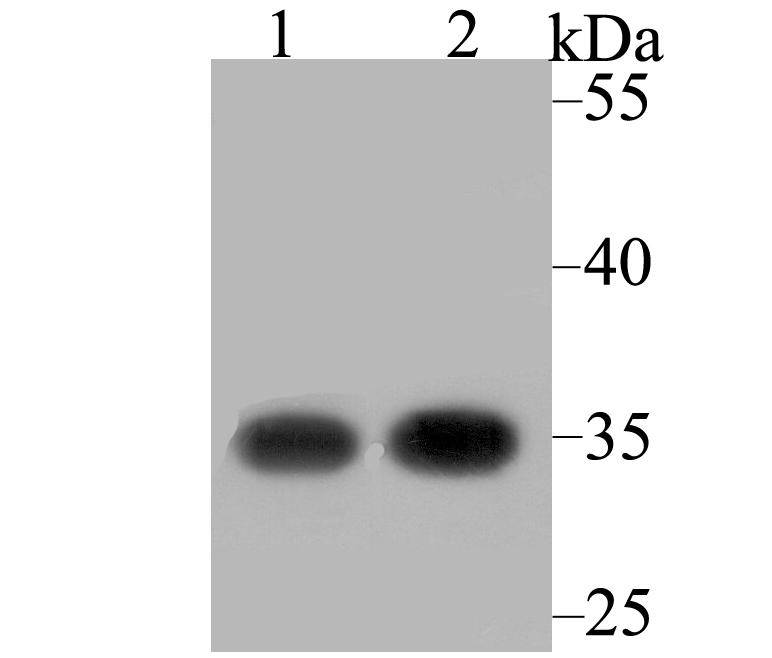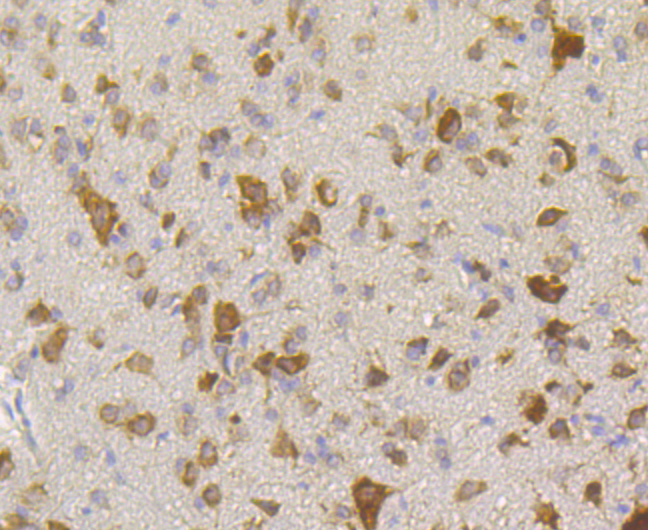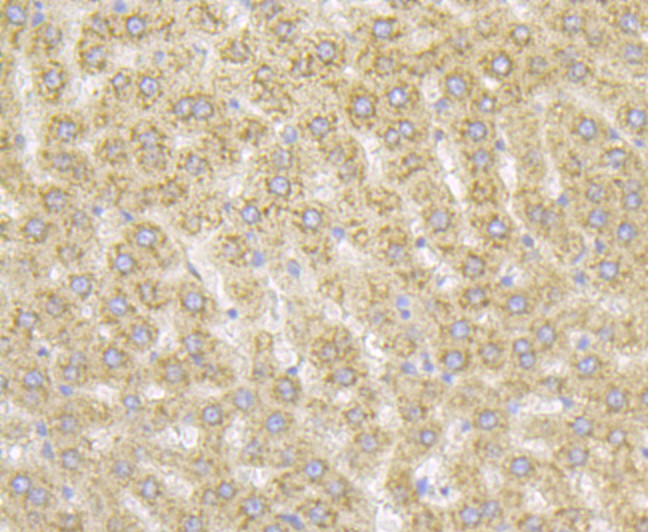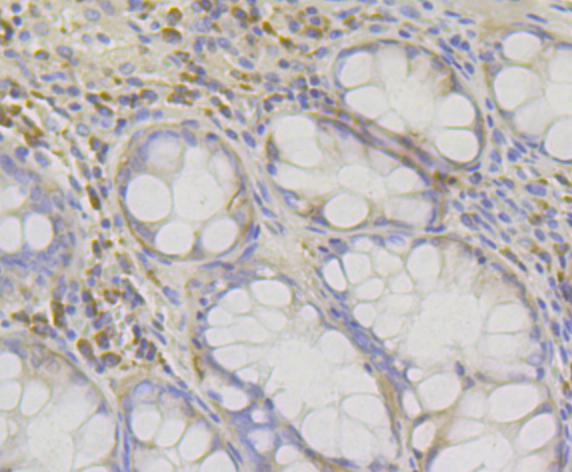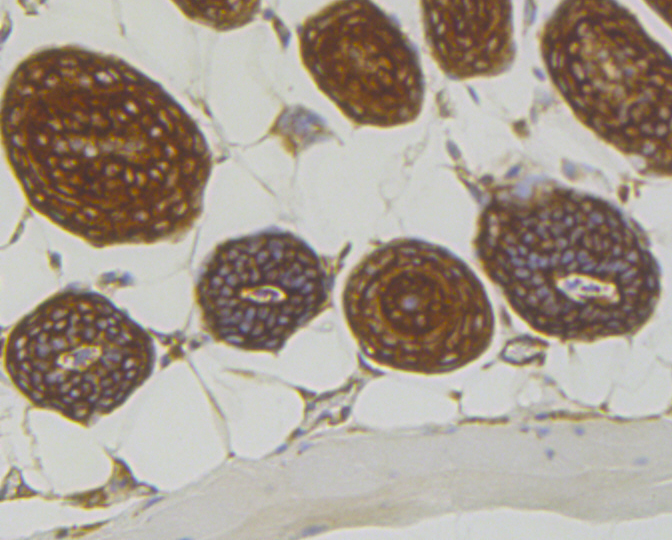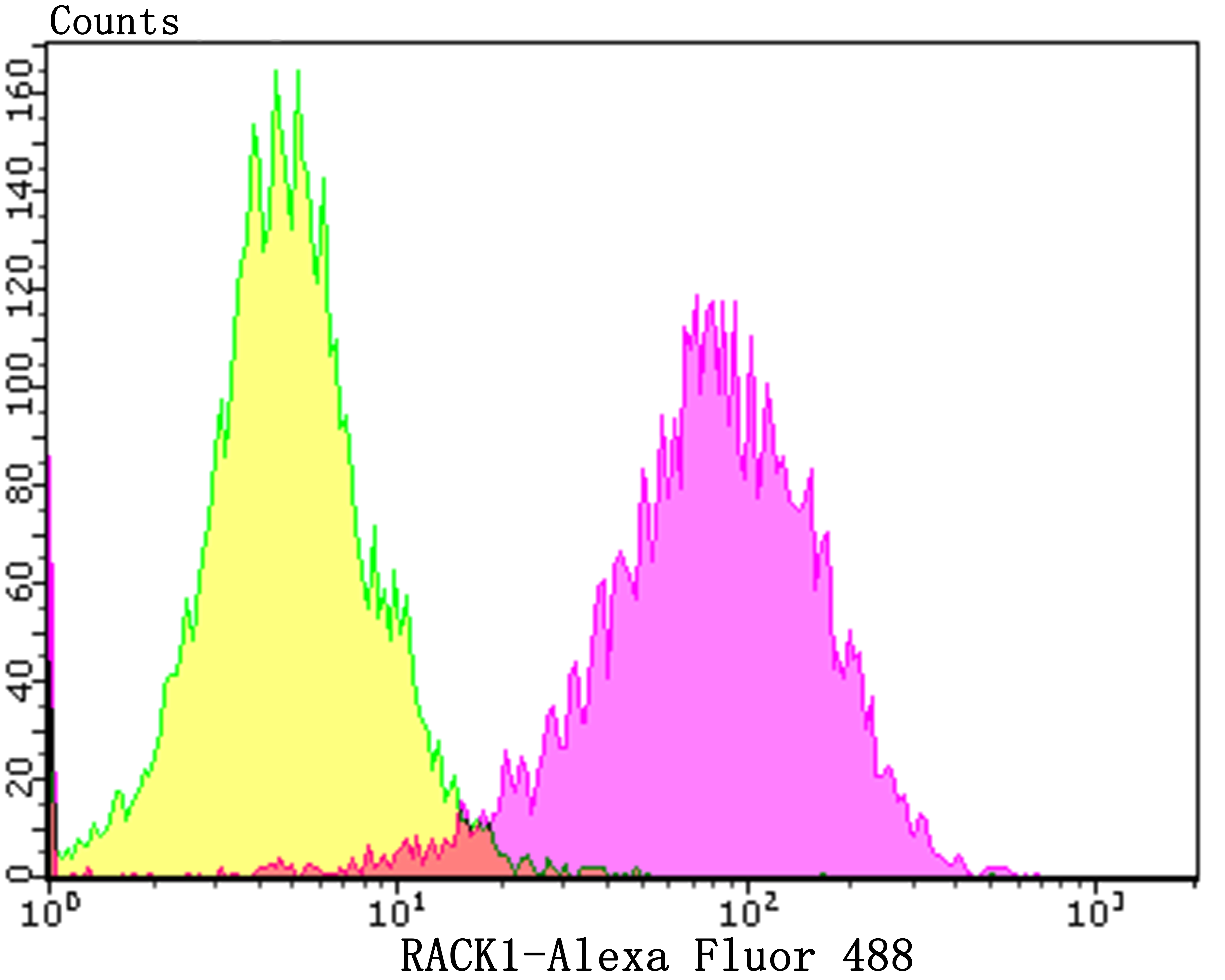Members of the protein kinase C (PKC) family play a key regulatory role in a variety of cellular functions, including cell growth and differentiation, gene expression, hormone secretion and membrane function. Receptor for activated C kinases, termed RACKs, are intracellular receptors for activated PKC that may be involved in the activation-induced translocation of PKC. RACK1 (receptor for activated C kinase 1) is a 317 amino acid G protein b subunit-like protein that functions as a RACK and inhibits the activity of Src tyrosine kinases. In response to PKC activation, the intracellular localization of RACK1 and PKC bII changes, and RACK1 and PKC bII co-localize to the same sites. RACK1 is therefore thought to be a shuttling protein for PKC bII. A deficit in RACK1 may be associated with impaired PKC activation in the aging brain. The RACK1 gene is conserved in chimpanzee, dog, cow, mouse, rat, chicken, zebrafish, fruit fly, mosquito, C.elegans, S.pombe, S.cerevisiae, K.lactis, E.gossypii, M.grisea, N.crassa, A.thaliana, rice and P.falciparum, and maps to human chromosome 5q35.3.

